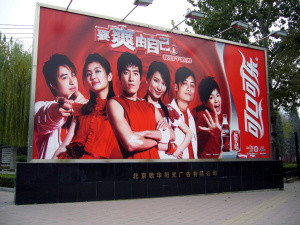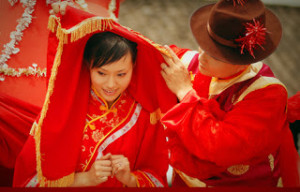Marketing Communication in China
Have you ever said something you perceived to be funny and a person you were telling it to is completely baffled and even offended? I have! You can say it was very insensitive that I made a comment to an Asian without thoroughly understanding the full cultural sensitivity of the subject. The same can be said to when conducting business and marketing in China. Advertising agencies must fully understand the culture, language, and the ways things are perceived, performed and accomplished.
First and foremost, one must realize China is a Communist state and the Communist party holds the highest authority of the land and maintains tight control of speech, religion, and assembly. The government can control every aspect of life. Albeit China has eased up with its hardline communism practice due to pressure from the burgeoning economy, communism is still alive and well.
To be successful in conducting business in China, the company must understand the customs and practices of the Chinese. It is great importance one has the complete understanding of a culture of a particular country prior to engaging in a marketing strategy. China is in a high-context culture, and much of the information resides in the contexts of communication, associations, and fundamental values of the communicators (Keegan & Green, 2014, p. 115).
China is a unique culture in a sense that a number and a color signify a diverse meaning. The color red has long had significance in China as it represents the Communist movement in 1949. Red has taken on different meanings and contexts, some ancient and some very modern. The color red has acquired these characteristics over thousands of years, and today, red has the symbol of prosperity and happiness. Importantly, it’s also the primary color for celebrations, especially the Lunar New Year and wedding ceremonies (Gao, 2011).
To establish a strong working relationship with the Chinese in China, one must treat the Chinese counterparts to dinner and communicate through dinner, meals, and other activities. A formal dinner in a private room of a grand restaurant is common prior to a setting down into business. It is highly important to adhere to this rule when attending the meals. At an informal meal, there will always be alcohol. If one cannot consume alcohol, he must use medical grounds as excuses. The best way is to bring someone who can drink alcohol. Chinese like to know and trust the person and establish a relationship before doing business transactions. Make sure to greet everyone with a light handshake as it is regarded as respectful and standard business practice in Chinese business meetings. It is critical to establish an intimate relationship with the Chinese government officials. The government has intimate knowledge and control of the market movements as well as administering foreign enterprises. Potential delays in the process of obtaining a license can be eliminated (Sally, 2012).
Number eight indicates prosperity, wealth, success or social status. One example of its use was the 2008 Beijing Olympics Opening Ceremony held on August 8, 2008 (8/8/08), at 8:08 pm. (Wu, 2015).
Art directors and advertising managers must collaborate carefully in order to avoid certain color schemes and numbers in their advertisements that can potentially offend the Chinese culture and its people. Doing so would certainly implode and lead to epic failure.
Reference:
Gao, K. (2011, January 17). Avoiding insult and injury when using color in China. Retrieved from: http://www.illuminantpartners.com/2011/01/17/color
Keegan, W. J. & Green, M. C. (2014). Global marketing (8th ed.). New Jersey: Prentice Hall.
Sally (2012). Business practices – top 10 critical dos to sustain prosperous business in Guangzhou. Retrieved from http://www.business-in-guangzhou.com/business-practices-top-10-critical-dos-to-sustain-prosperous-business-in-guangzhou.html
Wu, A. (2015, February 12). Number 8 and other “lucky” numbers. Retrieved from: http://www.chinahighlights.com/travelguide/culture/lucky-numbers-and-colors-in-chinese-culture.htm



2 Responses to Marketing communication in China